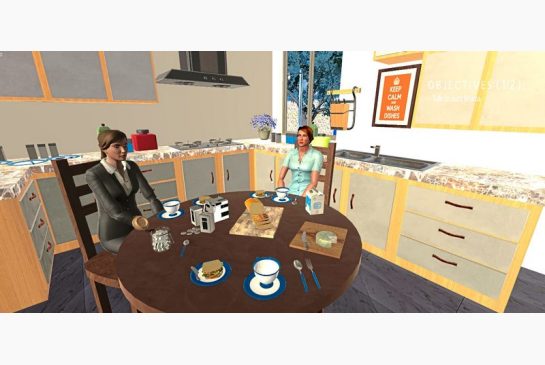SFU sociology researchers are teaming up with master’s students from the Centre of Digital Media to develop an immersive game where players assume an avatar and navigate the Lower Mainland as a trans youth to better understand the daily experiences of the young trans population.
Associate professor of sociology Dr. Ann Travers is the principle investigator behind the game, called Gender Vectors of the Greater Vancouver Area, and is working alongside Dr. Jennifer Marchbank, an SFU professor in the gender, sexuality, and women’s studies department, and Dr. Sharalyn Jordan, an SFU assistant professor in the faculty of education, to develop the project.
Understanding through experience
In an interview with The Peak, Travers elaborated on her inspiration behind developing Gender Vectors: “I wanted to find a way to get knowledge out there in a more accessible format, so that people who wanted to understand what life was like for trans kids could get a sense of that without going through an article.”
She hopes that the game can also be useful for policy makers, who can use the information provided within the virtual reality of the game to gain a first-hand experience of the obstacles faced daily by trans people, which can then inform their relevant policy choices. “If you’re not trans, you don’t notice the things that make life difficult for trans people,” said Travers. “But if you play the game as a trans person, you go, ‘Oh, wow, I can’t go in that washroom.’”
Travers also wants to use the game platform to amass a set of resources available to trans youth in the Lower Mainland area. “We want youth to be able to play the games and identify places they can go,” she stated.
Life in different shoes
The ultimate goal for the team is to develop a game that allows players to pick from a number of avatars and navigate various places in the Greater Vancouver area. “We wanted to make visible the challenges that trans kids experience in their daily lives, and draw attention to some of the supports that do exist,” said Travers on the design process.
At its current stage of development, the prototype of the game involves three scenes and one avatar.
The first scene begins when a trans youth from a different part of the country arrives in Vancouver to live with their queer aunt, as their former home is an unsafe environment for them as a trans person. The aunt’s home is filled with LGTBQ+ resources that players can explore with their avatar. The second scene occurs on the SkyTrain, allowing players to navigate the experiences of a non-binary youth on public transit. In the third scene, the avatar visits Youth for a Change, an organization in Surrey, where they encounter a group of youth as well as adult facilitators who provide support for trans kids.
Virtual, but still reality
To develop the storylines for the game, Travers, Marchbank, Jordan, and the graduate students interviewed 30 trans youth and their parents in the Greater Vancouver area. They used the data and experiences to then write storylines that the avatars in the game could follow.
The team is looking to develop storylines for multiple avatars — the goal currently stands at 12 — to ensure even representation of the different ways one can be trans across racial, gender, and socioeconomic boundaries.
“To talk about the experiences of a relatively well-off, white, relatively conforming trans person is a lot different than for people who are racialized or immigrants, defy binary classification, or identify as trans consistent with binary, but who either don’t have access or don’t wish to access trans-affirming healthcare so they’re constantly misgendered,” said Travers.
“There are so many different kinds of trans people, and we don’t want to limit representation to just a few.” – Dr. Ann Travers, SFU associate professor
To gain further information that can be used to inform game design, the team is holding a workshop on May 6 where they are inviting trans youth to come and provide feedback on the game prototype and to facilitate a discussion with the community.
A learning curve
The team behind Gender Vectors have been working on developing the game for three years. According to Travers, the most unexpected challenge the team has encountered so far is the price tag associated with developing a game.
“One of the things we discovered is that it’s incredibly intensive to make a game,” said Travers. So far, the team has invested between $25,000 and $30,000 into the game development process, and they are estimating another $200,000 to get the project to its envisioned end.
The project has been a learning curve for everyone involved, affirmed Travers. “[The game developers] learned a lot about trans issues, and we learned a lot about what is involved in building a game.”
Future paths
Travers estimates that the game will be available for public use in approximately three or four years. They are looking for additional grants and hopefully an industry partnership as they continue along the path of game development.
The final version of the game is envisioned to be playable on mobile phones through an app, specifically for the resource porthole aspect, and the full version of the game to be accessible on laptops.




